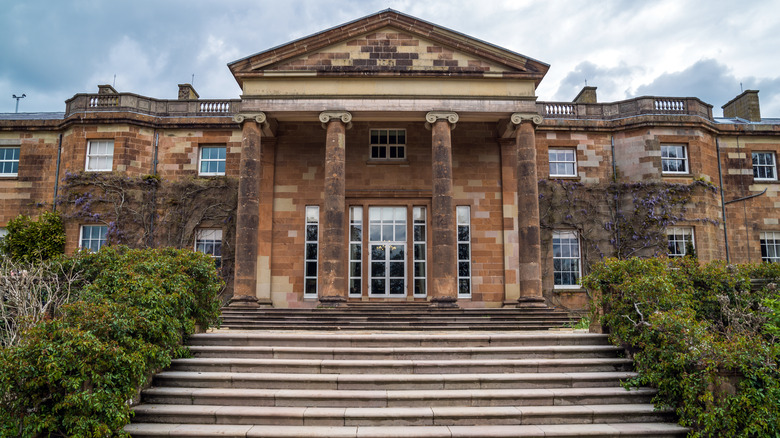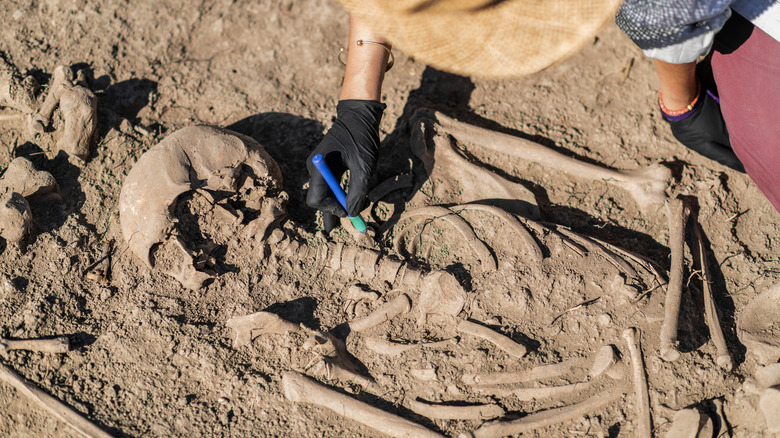The Mysterious Skeleton Discovered In Northern Ireland's Hillsborough Castle
On the grounds of Hillsborough Castle, Elizabeth II's royal residence in Northern Ireland, a group of archaeologists and local volunteers made a shocking discovery in 2016. The team had been looking for the ruins of a medieval church on the lands surrounding Hillsborough Castle, but they unearthed a skeleton instead. "We were hoping to find the remains of a medieval church or post-medieval church that was on the site before it was moved," Jonathan Barkley of the Northern Archaeological Consultancy Ltd explained to an ITV reporter.
According to the BBC, the archaeologists and volunteers had only been working for about two hours when they made their gruesome discovery. The human remains at the Hillsborough Castle are believed to be roughly 1,000 years old and of a female. Judging by her teeth, the woman was probably in her 20s or 30s when she died (via the Belfast Telegraph). And there may be more human remains on the site. "We have found a few other grave cuts, suggesting there are others, but we're just excavating the one skeleton," said Rosanagh Fuller of Historic Royal Palaces, which is a charitable organization that looks after Hillsborough Castle and four other royal sites.
The skeleton could be 1,000 years old
If the archaeologists' estimates are correct, the skeleton predates the castle itself, which was built by the Hill family in 1770 (via the Belfast Telegraph). Before the castle, a church was torn down to make way for construction. The church, now known as St. Malachy's, was moved, and it is located in the center of Hillsborough village. The remains also possibly predate the medieval church that the archaeology team was searching for. "We're talking about early Christian times, which is really exciting," said Fuller.
The castle has 100 acres of grounds, so who knows what other historic treasures may be hidden beneath the surface there. The property remained in the Hill family until the 1920s when the 6th Marquess of Downshire sold it to the British government (via the Ulster Star). Since then, members of the royal family stayed at the castle during visits to Northern Ireland. It has also served as a home of Northern Ireland's secretary of state, and many peace talks have been held there over the years (via the Historic Royal Palaces).

